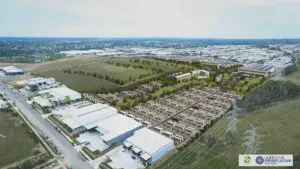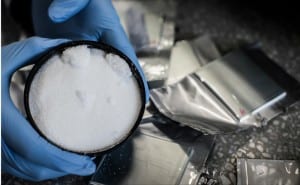The New South Wales Hunter region has been named as the preferred location for what is likely to be Australia’s first gigawatt-scale lithium-ion battery manufacturing operation, right in the middle of the state’s coal and gas heartland.
Energy Renaissance said on Tuesday that it would start building the $28 million, solar powered Renaissance One battery plant within weeks in the semi-industrial suburb of Tomago, where it expects to begin producing Australian-made batteries by mid-2021, and which is also the site of the country’s aluminium smelters.
The company’s director, Mark Chilcote, said that the 4,000 square metre purpose-built facility would be built by local property developer ATB Morton and have an initial battery production capacity of 66MWh per annum, with plans to scale to 5.3GWh a year within 10 years.
Chilcote said that the company had landed on Tomago as the site for the factory due to its easy access to the Port of Newcastle, for the company’s future export plans, and its proximity to highly-skilled talent from CSIRO’s Energy Centre and graduates from the University of Newcastle.
The region also has a skilled energy industry workforce that will be looking to transition from the declining coal power sector and could be fairly easily “re-skilled,” Chilcote says, and transitioned to battery production.
“Over 1,700 direct jobs will be created during the construction and operational phase and another 6,500 indirect jobs will be generated for the benefit of the Hunter,” he said on Tuesday. More than 1200 full-time equivalent workers will be required to operate the plant once it is running at full scale.
“The Hunter region has all the right skills, natural resources, expertise and an abundance in solar energy for us to develop a successful battery manufacturing business in Australia,” Chilcote said.
As RenewEconomy has reported, Energy Renaissance has been working on plans to build a battery “gigafactory” in Australia since 2017, when it looked like a deal had been struck with the Northern Territory government to establish a starter factory in Darwin.
That deal ultimately fell through when an agreement couldn’t be reached that satisfied both parties. But the plans got back on track in July, when Energy Renaissance won a co-funded grant from the Advanced Manufacturing Growth Centre (AMGC), including matched financial contributions of $246,625 towards a project goal of making batteries for Australia and export to Asia.
The grant is also being used to design an automated production line using robotics and automated quality control systems to increase efficiencies across Energy Renaissance’s planned manufacturing facility.
Energy Renaissance says the “hot climate” batteries it will be manufacturing at the Tomago plant will primarily be for stationary storage, with an initial target market of industrial grid connected batteries, including through existing contracts with the Department of Defence.
“We will be selling batteries into community storage and into commercial applications,” Chilcote told RenewEconomy in an interview; “hospitals, schools, shopping centres, what have you.
“And eventually special purpose vehicles, forklifts, mine vehicles, airport moving vehicles – all of those are applicable to our batteries,” he said.
Chilcote says the Renaissance One batteries will have two attributes relatively unique to li-ion, in that they don’t suffer from thermal runaway and they are optimised for higher temperatures, to suit deployment in the warmer parts of Australia as well as in Asia.
“Initially we’ll be 100% domestic,” he told RE. “But when we’re at peak production, we expect around 60% [of the batteries we manufacture] to go to Asia.”
Chilcote says the plan is to break ground on the factory later this year, begin producing batteries by the middle of next year, and then reach Renaissance One’s initial nameplate capacity of 66MWh a year by Q3 in the next calendar year.
“We’re going to grow to 5.3GWh per annum, that’ll take us 10 years. All we’re hoping for is some government assistance,” he said.
Apart from the small amount of government funding secured in July, to date the company’s efforts have been fully funded by its founding shareholders, which comprise small family and friend shareholders and private investors.
“They got the company to where it is now and will take the company to full operation,” Chilcote stressed on Tuesday, “but if we get government funding we can accelerate the roll out.”
Ultimately, the Energy Renaissance vision is to – as Chilcote put it, metaphorically – “stop exporting wool and start exporting jumpers.”
“Initially, we will have to import from Asia and the US 100% of the components to manufacture the batteries, which is criminal when you think that we mine all of the products and have to buy back value added matter,” Chilcote said.
“Within three years we want to use 100% of Australian material, that we source from Perth or South Australia and the Northern Territory, rather than Asia or America.
“We are working on this in partnership with CSIRO – the desktop part of our roadmap is finished, now we just have to liaise with the organisations to do it.”
Chilcote – who himself was born in the heart of Victorian coal country, in a Latrobe Valley hospital later demolished to make way for a coal pit – is also determined to power the entire operation with renewable energy.
“The facility is 4000 square metres and we’ll have that rooftop full of solar,” he said. “Our batteries will also be used to power the facility.
“There will be some top-up power required, so we’ll ensure that we buy that from a green source. In time we’ll have a PPA with a green energy provider.
“It defeats the purpose of us being in the renewable energy business if we’re sourcing power from a fossil fuel.”











